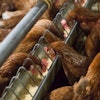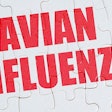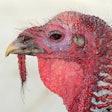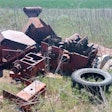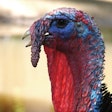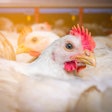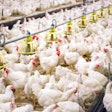The highly pathogenic avian influenza outbreak in the Netherlands in 2003 led to the death of about 30 million birds -- about one-third of the country’s domestic poultry. This devastating outbreak was the first for highly pathogenic avian influenza in the Netherlands in 70 years, and it resulted in several preparatory measures to be put in place to help halt the viruses spread when it returned. These action plans were put to the test in fall 2014.
Avian flu = no movement
Dr. Christianne Bruschke, chief veterinary officer, the Netherlands, said that once the first Dutch poultry farm, a cage-free layer facility, tested positive for highly pathogenic H5N8 avian influenza in November 2014, a 72-hour nationwide standstill was implemented. This meant no movements on or off any poultry farm was allowed. Processing plants didn’t operate, hatcheries couldn’t deliver chicks, and eggs stayed on breeder and layer farms.
Bruschke told the audience at the International Conference on Avian Influenza and Trade in Baltimore, Maryland, that you want to freeze the whole situation and get an idea of what is going on. Perhaps just as important as the freeze on movements is, infected flocks are culled immediately. She reported that affected flocks were all put down the day infection with avian influenza was confirmed. Bruschke said the Netherlands has a very aggressive response to avian influenza -- going beyond EU regulations -- because of the country’s high concentration of poultry.
The initial halt on movements or “standstill” was kept in place for 2.5 days, but when another farm broke with avian flu just 24 hours later, a 72-hour standstill was put in place. Movements of poultry and eggs were halted for all but 24 hours in a 6.5 day period.
After the second standstill, the country was divided into four regions and movements were regulated within regions to avoid, wherever possible, movement of birds, eggs and feed from one region to another.
Pre-emptive culling for avian flu
Pre-emptive culling of all flocks within a 1 kilometer zone around infected farms as well as any other “dangerous contact holdings” is exercised. An example of a dangerous contact holding might be a farm that shares equipment with an infected farm, receives eggs or birds from an infected farm, or had some other type of contact like sharing a vaccination or insemination crew recently. Bruschke said this procedure is based on modeling work from the 2003 outbreak in the Netherlands.
Ultimately, the highly pathogenic avian influenza outbreak in the Netherlands of 2014-15 infected three table egg laying farms, one pullet farm and one duck meat bird farm. The control measures that were implemented were sufficient to prevent the type of widespread outbreak the country experienced a decade earlier and which the Upper Midwestern U.S. has suffered in 2015.
EU perspective on avian flu
Dr. Francisco Javier Riviriego-Gordejo, head of the sector disease control, European Commission; Dr. Simon Hall, veterinary director, Animal and Plant Health Agency, U.K.; Dr. Jorn Martin Gethmann, senior scientist, Federal Research Institute for Animal Health, Germany; and Bruschke sat on a panel to present details of the outbreaks in their respective countries and answer questions regarding the recent avian influenza outbreaks in Europe.
Gethmann said that, in Germany, as in the rest of the EU, all of the avian influenza mortalities and culled birds were rendered. He said Germany enacted a 72-hour standstill after the first outbreak farm was discovered, but that the standstill was regional and didn’t affect the entire country.
Similar to the Netherlands, Gethmann said all farms that have contact with an infected farm are culled. He also said that, because of concern for airborne transmission of the virus, all farms within 1 kilometer of an infected farm are culled.
Hall said the U.K. outbreak involved a flock of 7,000 breeding ducks which were near the end of their laying cycle. He said the hatchery where the farm’s eggs were sent was tested and that all the eggs from the infected flock were destroyed. Eggs from many other flocks in the hatchery were also destroyed because they came into contact with eggs from the infected farm.
“We destroyed a spectacular number of hatching eggs,” Hall said.
All of the panel members agreed that early recognition of the disease on affected farms, rapid culling, and stopping movement of poultry and poultry products are keys to controlling an outbreak.
Lessons for the U.S. poultry industry
Each outbreak of infectious disease in the poultry industry is a little bit different. Time of year and weather conditions can play a role; viruses, particularly influenza viruses, change and mutate; biosecurity practices vary; and the density and type of farms varies from one region to another. All of these factors can play a role in determining whether an outbreak affects a few farms or many more.
This year’s avian influenza outbreak in the U.S. is by far the most costly in the country’s history and took months to control, while the outbreaks in Western Europe in 2014-15 involved very few farms. Why?
One possible explanation is that the viruses are different. The H5N2 and H5N1 viruses that have wreaked havoc on the U.S. poultry industry are the result of a hybridization of North American viruses and the H5N8 virus of Asian origin. The EU outbreak viruses are much closer genetically to the original H5N8 viruses from Asia than the current U.S. strains are.
There are also two big differences in how the outbreaks were handled in the U.S. and in the EU. First, infected flocks were put down more quickly in the EU than they were in the U.S. Some of the explanation for this is the higher bird counts on many of the infected U.S. farms and because many of the layers were housed in cages and they weren’t in the EU farms. If the U.S. industry plans to continue to house millions of birds in cages at one location, then it is going to have to devise a way to euthanize that number of birds quickly. Having hundreds of thousands or even millions of birds shedding virus while plans are being devised to cull them isn’t a risk that the industry can take again.
The second difference in how the outbreaks were handled is that EU countries were more rigid on stopping all movement of poultry and poultry products at the start of the outbreaks. Presentations from U.S. speakers talked about the thousands of permits issued for movements as a means of control, but were movements ever frozen entirely? If they had been when the first farm in a region was found to be infected, what impact would that have had on the spread of the virus? Egg breaking companies were especially hard hit in the U.S. outbreak. Were all egg movements frozen when the first farm broke with the virus? What impact might that have had on the outbreak?
